Best Jobsite Table Saws for 2025
- December 12, 2023
- 0 comment
Undoubtedly, the best jobsite table saws stand out as a quintessential power tool in the arsenal of carpenters. Particularly for those carpenters whose work extends beyond the confines of a dedicated workshop, the indispensability of a portable jobsite table saw becomes apparent. In this comprehensive Head-to-Head analysis, our focal point revolves around corded portable 10-inch jobsite table saws. It’s worth noting that our evaluation deliberately excludes cordless table saws in this particular test, as we intend to conduct a separate Head-to-Head comparison exclusively for cordless variants later in the year, given the increasing availability of such models in the market.
List of 5 Best Jobsite Portable Table Saws:
- DEWALT DWE7491RS Table Saw
- Craftsman CMXETAX69434502 Table Saw
- SKIL SPT99T-01 Table Saw
- Milwaukee Cordless M18 Table Saw
- RIDGID R4518 Portable Table Saw
Summary: 5 Best Jobsite Portable Table Saws
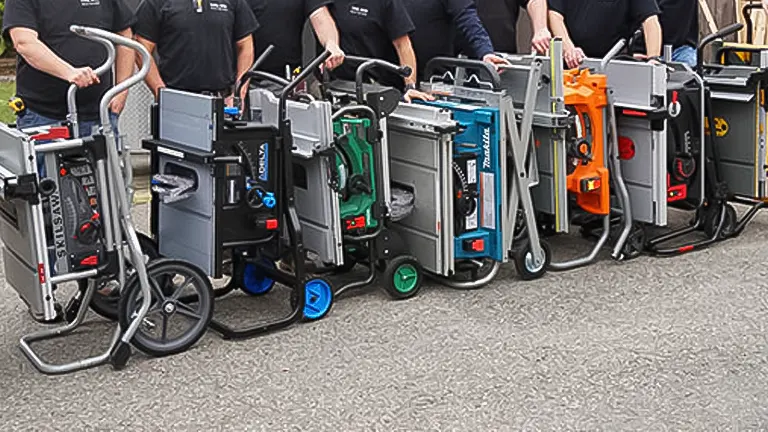
A table saw employs a customizable, partially exposed rotating blade to facilitate swift and precise cuts. While sharing fundamental similarities with circular saws in terms of basic functionality, table saws diverge by housing their blades within the worktable.
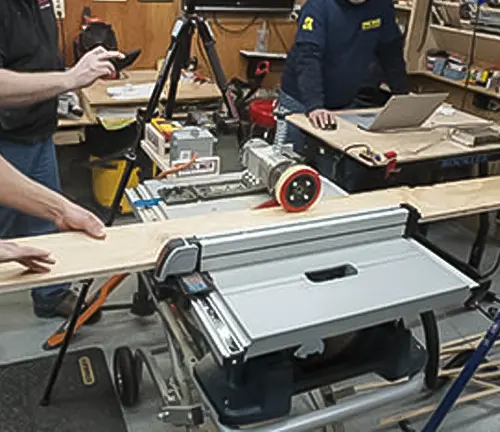
This unique design enhances the accuracy of cuts, especially beneficial when working on projects requiring consistent dimensions across multiple pieces. Carl Lewis, a certified joiner and the proprietor of the DIY website, The DIY Fix, emphasizes the versatility of table saws in various applications. According to him, “Table saws serve as versatile tools capable of tackling a range of tasks. Their most common application involves ripping down lumber and sheet materials, such as plywood, OSB, and other engineered wood sheets.
During lumber ripping, the table saw’s fence can be adjusted to achieve the desired cutting width. Additionally, the blade’s depth can be modified to accommodate different lumber thickness, and it can be tilted at an angle for creating angled cuts or bevels.” The utilization of angled or beveled cuts proves instrumental in crafting joints or for purely decorative purposes.
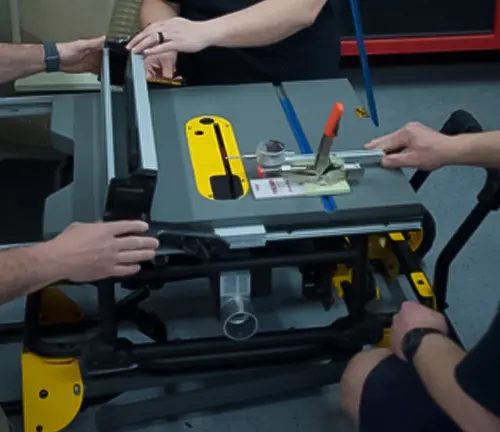
We conducted thorough research on the currently most sought-after table saws, systematically assessing each for factors such as precision, user-friendly design, power, cutting capacity and depth, additional features, and overall value.
Note: The information provided is based on general specifications available at the time of response. Actual features and specifications may vary, and it’s recommended to refer to the manufacturer’s official documentation for the most accurate and up-to-date information.
What to Know Before You Get Started
- The rip capacity of a saw determines its ability to cut wide boards in a single pass, contingent on the distance between the saw blade and the rip fence. When selecting a table saw, factor in the typical size of the boards you’ll be working with and opt for a rip capacity that accommodates them. For the average DIYer or home woodworker, a rip capacity ranging from 25 to 30 inches is generally sufficient.
- Beyond straight cuts, most table saws are equipped to make bevels, which are angled cuts along the edge of a board commonly employed in furniture making or trim cutting. If you intend to join two trim pieces at a corner, a pair of 45-degree bevels are essential.
- While many table saws offer the capability for dado cuts—a channel or groove that doesn’t traverse the entire board—this feature is not universal. Performing dado cuts often necessitates a specialized blade, which may not be included with the saw. Notably, our top budget pick, the Craftsman Jobsite Table Saw, stands out for its compatibility with such cuts, thanks to its included blade designed for this purpose.
The lineup of Portable Table Saws
The assembly of portable jobsite table saws in this comprehensive head-to-head review comprises a diverse lineup featuring eight prominent brands: Bosch, Delta, DEWALT, Hitachi, Makita, Ridgid, SawStop, and Skilsaw. Originally, we intended to incorporate Ryobi into this lineup as a budget-friendly option catering to DIY enthusiasts or individuals initiating their journey in the trades.
Unfortunately, despite our efforts, we encountered challenges in adapting the Ryobi saw to our rigorous testing rigs. Consequently, we decided to exclude it from the testing process, although you may come across some images featuring the Ryobi saw. It is crucial to clarify that the Ryobi saw is not considered in the final results of this evaluation.
Table Saw Assessment Framework
Once again, our dedicated team has invested significant time and effort in conducting a meticulous Head-to-Head evaluation to provide you with the most comprehensive information available. This evaluation is structured around distinct categories, including Precision and accuracy, Performance (power), Price, and Ergonomics. By thoroughly assessing each of these aspects, we aim to offer a nuanced perspective that enables users to make informed decisions. Ultimately, we will identify the Best Portable Jobsite Table Saw based on the amalgamation of all the results.
- Precision & Accuracy – This category delves into the accuracy of the table saws right out of the box and evaluates the ease of making calibration adjustments. Additionally, we scrutinize the quality of the fence system to achieve precise cuts during the ripping process.
- Performance – The performance evaluation entails an in-depth analysis of the power generated by the saw motors. We explore how effectively the saws handle various ripping materials, including plywood, pressure-treated Southern Yellow Pine 5/4 decking, and Mahogany 5/4 decking. Our assessment involves measuring saw RPMs and Amps for each cutting material under constant feed rates.
- Price – Acknowledging the significance of pricing in the decision-making process, this category provides current online pricing for each saw at the time of publication. By considering the cost factor, users can make informed choices based on their budgetary preferences.
- Ergonomics – Recognizing the importance of user experience, the Ergonomics category evaluates traditional ergonomic aspects along with overall functionality. This inclusive approach ensures that users not only have comfortable tools but also ones that enhance practical usability.
1. Top Pick: DEWALT DWE7491RS Jobsite Table Saw
Technical Specifications
| Brand | Dewalt |
| MAX no Load Speed | 4,800 rpm |
| Dept of Cut at 90 Deg | 3-1/8″ |
| Depth of Cut at 45 Deg | 2-1/4″ |
| MAX Rip Cut to Right of Blade | 32-1/2″ |
| MAX Dado Cut Width | 13/16″ |
| Weight | 90 lbs (w/ stand) |
| Features | Rack and pinion fence |
Impressing us with its remarkable slicing capabilities across a diverse range of materials during the reconstruction of a large deck, this Dewalt table saw proves to be a versatile tool for both indoor and outdoor DIY projects. It effortlessly cuts through wood, plastic, and PVC, showcasing its adaptability. The foldable legs enhance its portability, allowing easy relocation to any desired spot. Despite its weight of 110 pounds, the sturdy wheeled stand ensures stability during operation, alleviating concerns about shifting or movement.
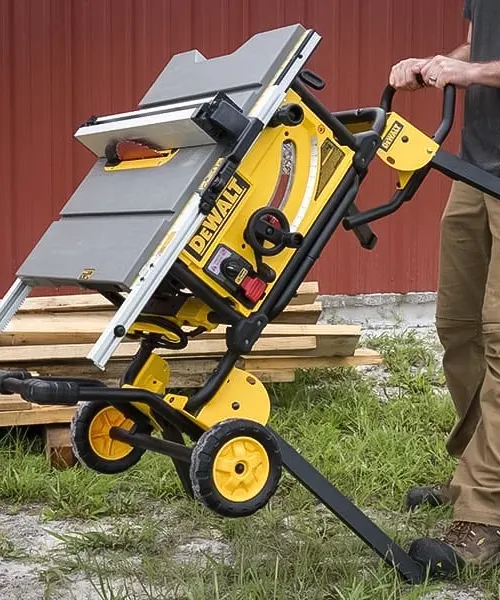
Featuring a 10-inch blade, a substantial 32 ½-inch rip capacity (the largest among our selections), and fence rails that smoothly extend for oversized boards, the DWE7491RS is well-equipped for efficient 3 ⅛-inch deep cuts on thick wooden slabs. Its 15-amp motor, capable of reaching up to 4,800 rpm, ensures powerful performance. The saw can handle dado cuts up to 13/16-inch wide with a suitable blade (not included) and throat plate. For added versatility, the table tilts up to 45 degrees for bevel cuts, although adjusting the bevel lock lever may be a bit tricky. Miter cuts are also well within its capabilities.
The Dewalt saw’s fence system, functioning as a guide for boards parallel to the blade, employs a rack-and-pinion mechanism that is both user-friendly and highly precise. This feature instilled confidence in the fence’s reliability and measurements, enhancing overall efficiency by eliminating the need for repeated measurements. In summary, we highly recommend this robust and accurate table saw for any DIY enthusiast looking to elevate their tool collection.
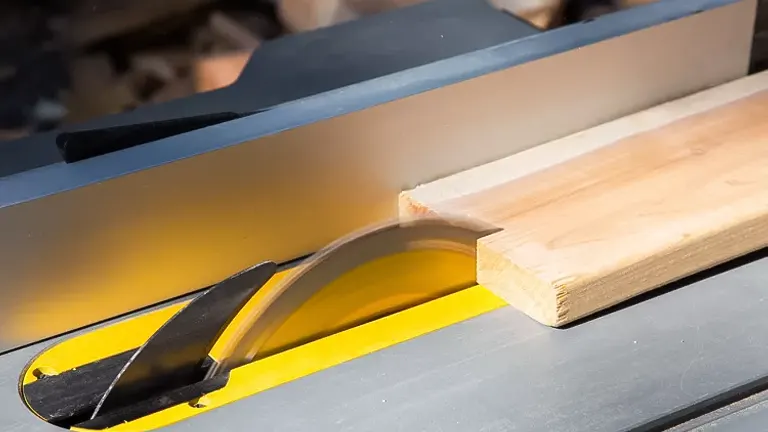
Is a Higher RPM Beneficial for a Table Saw?
Contrary to the assumption that higher RPM always leads to superior outcomes when it comes to table saws, the reality is more nuanced. In woodworking tasks, lower RPM can be essential to achieve the desired results. Elevating the blade’s speed may introduce several complications, including heightened vibrations that result in rougher cuts and increased noise levels. Moreover, an excessively high blade speed can lead to burning in hardwood. However, opting for a lower RPM addresses these issues, contributing to a smoother, more precise cut that is less likely to damage the wood. Understanding the delicate balance between RPM and task requirements is crucial for optimal table saw performance.
| What We Like | What We Don’t Like |
|---|---|
| – Impressive rip capacity | – Miter gauge lacks precision |
| – Efficient rack-and-pinion, fence rails | |
| – Convenient wheeled stand |
2. Best Budget Table Saw Choice: Craftsman CMXETAX69434502 Jobsite Table Saw With Stand
Technical Specifications
| Brand | Craftsman |
| Power Source | Corded Electric |
| Voltage | 120 V |
| Blade Diameter | Centered |
| Cutting Depth | 3.125 |
| Cutting Angle | 90° |
| Suitable For | Wood |
| Weight | 58 lbs |
| Set Includes | Blades, Stand |
For those prioritizing budget considerations and seeking a practical addition to their tool collection without the need for an extensive table saw or numerous extras, the Craftsman CMXETAX69434502 Jobsite Table Saw with Stand proves to be a suitable option. Powered by a 15-amp motor, this table saw drives a 10-inch blade at a speed of up to 5,000 rpm. It boasts a maximum cutting depth of 3.125 inches at 90 degrees and 2.25 inches at 45 degrees. Additionally, it accommodates bevel cuts up to 45 degrees and comes equipped with a miter gauge for precision in cutting miters.
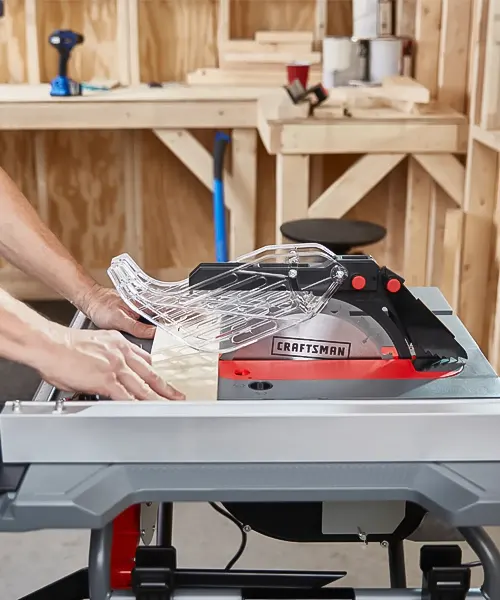
The saw offers the capability to cut dado grooves up to 1/2 inch in width, although it’s worth noting that a separate purchase of a dado blade and throat assembly is required for this function. The cast aluminum table, measuring 27-3/8 inches by 21-7/8 inches, supports rip capacities of 12 inches to the right and 10 inches to the left. While these dimensions may be smaller compared to some other table saws, they are adequate for most DIY projects, particularly those involving smaller boards.
Providing additional convenience, the table saw comes with a folding stand, eliminating the need to occupy space on your workbench. While it may not boast professional-grade features, this Craftsman table saw stands out as a practical choice for individuals undertaking occasional small projects who prefer a cost-effective tool without compromising on essential functionality.
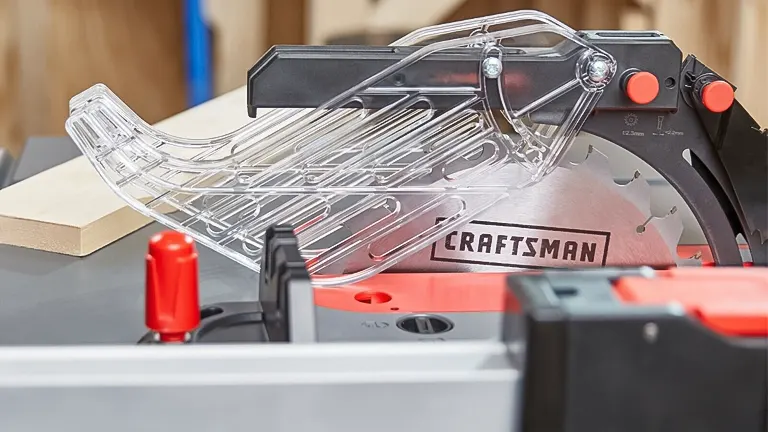
Does a higher RPM provide advantages for a table saw?
The question of whether a higher RPM provides advantages for a table saw is particularly relevant when considering the Craftsman CMXETAX69434502 Jobsite Table Saw With Stand. While a higher RPM might be associated with improved cutting speed and efficiency, it’s crucial to strike a balance. The Craftsman table saw, powered by a 15-amp motor, achieves a blade speed of up to 5,000 rpm. This configuration offers a commendable blend of power and precision, allowing for effective cutting across various materials. The higher RPM ensures swift execution of cuts, enhancing the overall performance of the table saw, making it well-suited for DIY projects that demand both speed and accuracy.
| What We Like | What We Don’t Like |
|---|---|
| – Convenient folding stand | – Limited rip capacity |
| – Consistent and reliable | |
| performance |
3. Top Pick for Portability: SKIL SPT99T-01 8-¼-Inch Portable Table Saw
Technical Specifications
- Dimensions: 25.75″L x 25.2″W x 14.88″H
- Voltage: 120 Volts
- Item Weight: 51.2 Pounds
- Speed: 5300 RPM
- Blade Length: 8 Inches
- Number of Teeth: 50
- Current Rating: 15 Amps
- Wattage: 1800 watts
- Size: One Size
- Style: 8-1/4” Table Saw
- Material: Blend
Skil presents a robust benchtop table saw that seamlessly combines portability with formidable power, making it an ideal companion for on-the-go woodworking tasks. Driven by a 15-amp motor, the 8-1/4-inch blade achieves a remarkable 5,300 rpm, effortlessly navigating through sheet wood and various lumber materials.
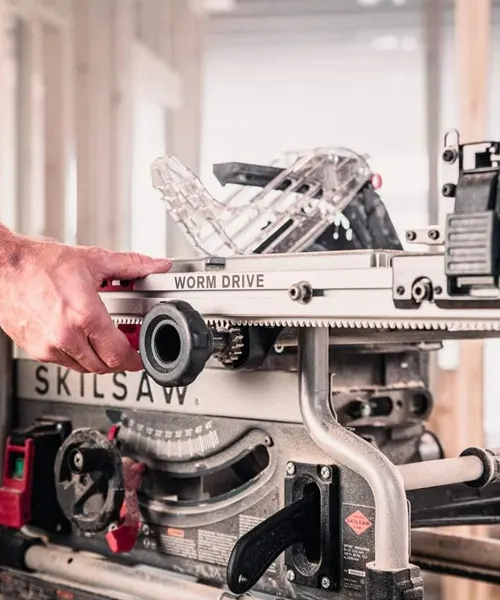
The spacious 27-3/4-inch by 22-inch work table, coupled with a maximum rip capacity of 25 inches to the right and 12 inches to the left of the blade, ensures versatility in accommodating different workpieces. Operating at 90 degrees allows for cuts up to 2-5/8 inches deep, while at 45 degrees, the maximum depth of cut reaches 1-7/8 inches. The saw offers flexibility with a left tilt of up to 46.5 degrees for bevel cuts, and the included miter gauge facilitates precise miter cuts across the board.
The rack-and-pinion fence system enhances accuracy in rip cuts, and for expanded functionality, an optional dado blade and throat assembly enable the saw to handle dado and rabbet cuts. A notable drawback is the absence of a stand, although one can be separately purchased. Nonetheless, the all-metal construction underscores the saw’s durability, demonstrating resilience in diverse jobsite or workshop conditions.
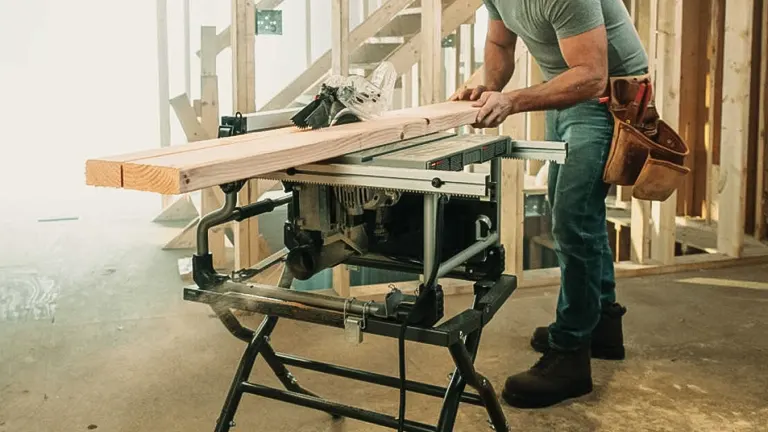
Can a table saw benefit from a higher RPM?
When considering the SKIL SPT99T-01 8-¼-Inch Portable Table Saw, the question of whether a higher RPM provides advantages is significant. The table saw, boasting a speed of 5300 RPM, indeed benefits from a higher rotation per minute. This elevated RPM enhances the cutting efficiency of the 8-¼-inch blade, allowing for swift and precise cuts through various materials. The increased RPM contributes to improved performance, making the SKIL table saw suitable for tasks that demand both speed and accuracy. Whether tackling sheet wood or lumber, the higher RPM ensures that the saw can effectively navigate through materials, offering a versatile and efficient tool for woodworking projects.
| What We Like | What We Don’t Like |
|---|---|
| – Relatively lightweight | – Stand not included |
| – Powerful | |
| – Sturdy construction |
4. Top Pick for Cordless Convenience: Milwaukee Cordless M18 Fuel One-Key Table Saw Kit
Technical Specifications
- Brand: Milwaukee
- Color: Multicolor
- Blade Material: High Speed Steel
- Special Feature: Brushless
- Voltage: 18 Volts
- Item Weight: 42 pounds
- Blade Length: 4 Inches
- Number of Teeth: 50
- Cutting Angle: 47 Degrees
- Current Rating: 15 Amps
- Package Dimensions: 28 x 23 x 14.4 inches
- Item Weight: 19.1 Kilograms
In a market dominated by corded power saws due to their energy requirements, the Milwaukee M18 Fuel One-Key Table Saw Kit stands out as a rare cordless powerhouse. Running on an M18 battery, this tool provides the robust performance of a corded table saw while offering the freedom to work anywhere without the constraints of power outlets. The battery boasts a substantial capacity, allowing the saw to rip through up to 600 linear feet of board before requiring a recharge, minimizing interruptions during work sessions.

Driven by a brushless motor, the saw achieves impressive speeds of up to 6,300 rpm, the highest on our list. The 8-¼-inch blade facilitates cuts up to 2.5 inches deep at a 90-degree angle and 1.75 inches deep at a 45-degree angle. The table features a commendable rip capacity of 24.5 inches to the right and 12 inches to the left, with easily adjustable rack-and-pinion fence rails. The bevel setting allows a tilt of up to 47 degrees to the left, and the saw includes a miter gauge for accurate miter cuts. For added versatility, an optional dado blade and throat assembly can be incorporated.
The tool’s “Smart Key” app further enhances functionality, enabling remote tracking of the tool’s location, remote disabling, and battery monitoring. While the table saw does not include a stand, Milwaukee offers one separately. The package does include the 18-volt, 12 amp-hour battery and a rapid charger. It’s important to note that, although the saw is highly accurate once properly calibrated, initial calibration may be necessary upon arrival, requiring careful attention to settings before the first use.
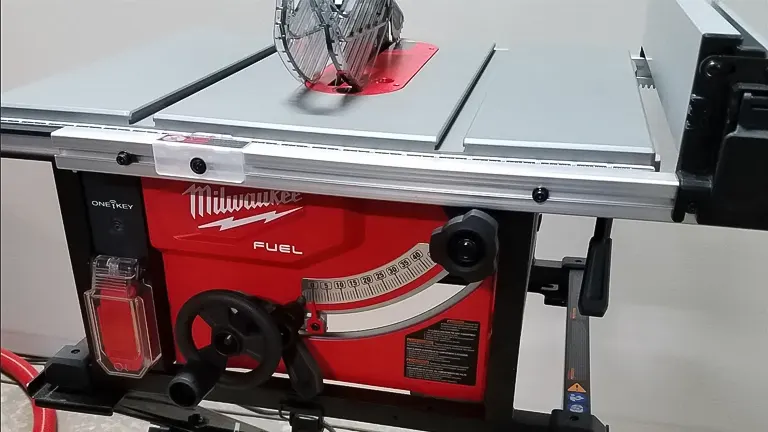
Is there an advantage to having a higher RPM for a table saw?
For the Milwaukee Cordless M18 Fuel One-Key Table Saw Kit, the question of whether there is an advantage to having a higher RPM is indeed pertinent. This cordless table saw, operating at a notably high speed, reaps several benefits from its elevated RPM. The increased rotation per minute, reaching up to 6,300 rpm, translates into enhanced cutting efficiency for its 8-¼-inch blade.
This heightened speed proves advantageous when navigating through various materials, offering a swift and precise cutting experience. The M18 Fuel One-Key Table Saw’s higher RPM ensures optimal performance, making it particularly suitable for tasks demanding both speed and accuracy. Whether tackling sheet wood or lumber, the elevated RPM contributes to the saw’s capability to swiftly and effectively cut through materials, adding versatility to its functionality.
| What We Like | What We Don’t Like |
|---|---|
| – Wireless tool connectivity | – Requires calibration before use |
| – Storage for guard and riving knife | |
| – Long battery life |
5. Ideal for Novices: RIDGID R4518 10-Inch Portable Table Saw With Stand
Technical Specifications
- Color: Multicolor
- Blade Material: Steel
- Surface Recommendation: Wood
- Special Feature: Brake
- Included Components: Bare-Tool
- Item Weight: 75.2 pounds
- Blade Length: 10 Inches
- Number of Teeth: 50
- Current Rating: 15 Amps
- Part Number: R4518
- Item Weight: 34.2 Kilograms
- Package Dimensions: 31 x 27.25 x 17 inches
Perfect for beginners in the realm of table saws and woodworking, the Ridgid R4518 offers a user-friendly tool that is particularly well-suited for at-home applications. While the included miter gauge may warrant an upgrade for improved accuracy, the saw proves more than sufficient for the average DIYer venturing into home repairs or exploring furniture making as a hobby.

Fueled by a robust 15-amp motor, the 10-inch blade achieves speeds of up to 5,000 rpm, providing ample power for working with both soft and hard woods. The saw facilitates a range of cuts, including rip cuts, cross cuts, bevels, and miters. Additionally, with a separate acquisition of the blade and throat assembly, dado cuts become a viable option. Featuring a table extension for enhanced workspace, the saw boasts a substantial rip capacity of 27 inches on the right and 8 inches on the left, accommodating a variety of projects. The maximum cut depth is 3-1/8 inches at 90 degrees and 2-1/4 inches at 45 degrees.
The blade can be angled up to 45 degrees for bevel cuts. Incorporating soft-start technology, the saw gently ramps up the starting speed, ensuring better control. For added convenience, it comes with a folding stand, allowing for easy storage in a workshop corner without occupying valuable bench space. Simple to use and relatively straightforward to assemble, the Ridgid R4518 is an ideal choice for those new to woodworking, providing a hassle-free introduction to the world of table saws.
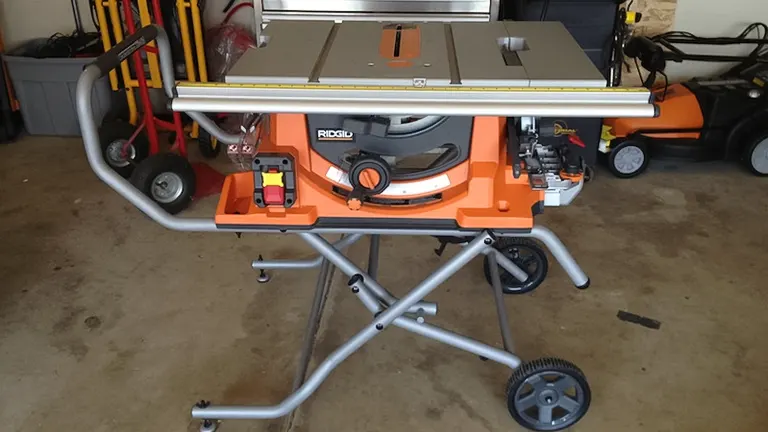
Does having a higher RPM offer benefits for a table saw?
When considering the RIDGID R4518 10-Inch Portable Table Saw With Stand, the question of whether having a higher RPM offers benefits becomes significant. In the case of this table saw, the higher RPM indeed provides notable advantages. With its powerful 15-amp motor, the 10-inch blade can achieve speeds of up to 5,000 rpm, ensuring efficient and swift cutting through various materials, be they soft or hard woods. The elevated RPM contributes to enhanced cutting performance, making the saw suitable for a range of tasks, including rip cuts, cross cuts, bevels, and miters.
The higher RPM is particularly advantageous when tackling projects with intricate or detailed cuts, as it allows for greater precision and smoother operation. It ensures the saw can maintain consistent speed even when encountering denser materials, resulting in cleaner and more accurate cuts. The RIDGID R4518’s higher RPM is a key feature that aligns with the demands of woodworking tasks, providing the user with increased control and versatility. It’s worth noting that the benefits of a higher RPM are particularly evident when working with denser or thicker materials, where the additional speed helps optimize the cutting process.
| What We Like | What We Don’t Like |
|---|---|
| – Easy to set up and use | – Miter gauge is not the best |
| – Soft-start technology |
Precision and Accuracy in Portable Jobsite Table Saws
Within the realm of commercial construction, the acquisition of a jobsite saw for each project is a common practice, often utilized throughout an 18-month project duration. In such scenarios, these saws are swiftly unboxed, assembled, and immediately deployed for cutting stacks of sheet goods. Precision in the cut materials may not be of utmost importance in this context. However, this represents the typical usage within commercial crews.
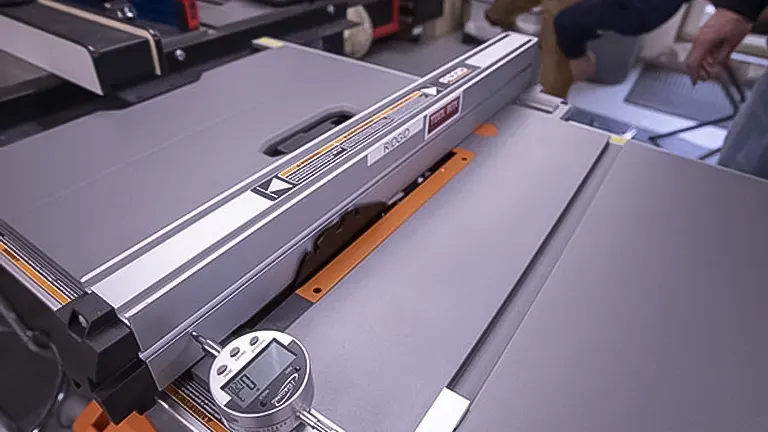
Now, consider a scenario where a contractor employs their jobsite saw for tasks demanding high-quality built-ins or precise finished cuts. In such cases, the accuracy of the saw becomes paramount. Success in this application hinges on the out-of-the-box accuracy provided by the manufacturer. The quality of cuts and, more crucially, the safety of the operator are contingent upon the inherent accuracy of the saw upon initial shipment.
To assess and compare the relative accuracy of the test saws in the TBB Head-To-Head test, we conducted measurements immediately upon assembly and setup. How did the saws fare against each other in terms of accuracy? We meticulously measured the manufactured tolerances, analyzed the test data, and subsequently ranked these saws based on their as-built accuracy.
Measurement Criteria and Methodology
In our comprehensive evaluation of the manufactured accuracy of the eight saws, TBB employed a meticulous approach, focusing on six crucial areas for measurement and comparison. These areas encompassed Table Flatness, Accuracy of 45 Deg. Stop, Accuracy of 90 Deg. Stop, Blade Parallel to Miter Slot, Fence Parallel to Miter Slot, and Blade Runout.
Table Flatness:
For the evaluation of table flatness, TBB utilized precision ground flat bars and feeler gauges. We assessed flatness in four directions: front-to-rear flatness at the arbor, left-to-right flatness at the arbor, flatness from upper left-to-lower right table corners, and flatness from upper right-to-lower left between the corners. Measurements were meticulously taken, and any gaps between the flat bar and the table were recorded using feeler gauges.
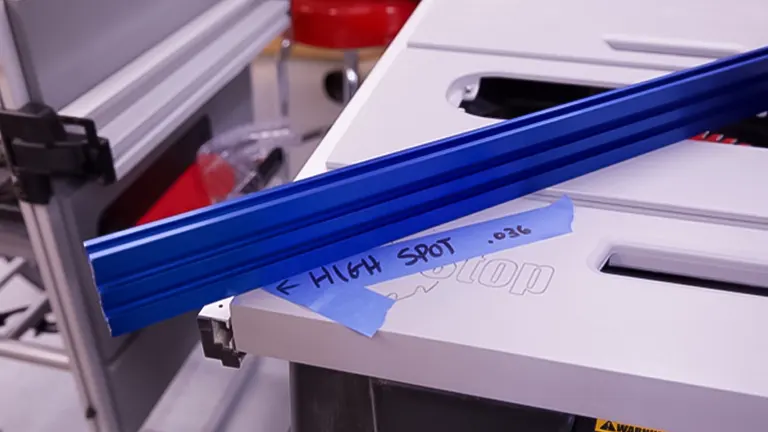
To establish a comprehensive ranking, a 1-2-3 rating system was employed for the relative values of the test measurements. The saws were then ranked based on overall as-manufactured table flatness. As a reference, the thickness of a typical sheet of copy paper is approximately 0.004 inches, and the flatness measurements varied within the range of 0.0 to 0.09 inches.
For detailed data on table saw flatness, please refer to the provided link. The overall ranking of table saw flatness is presented in the following table.
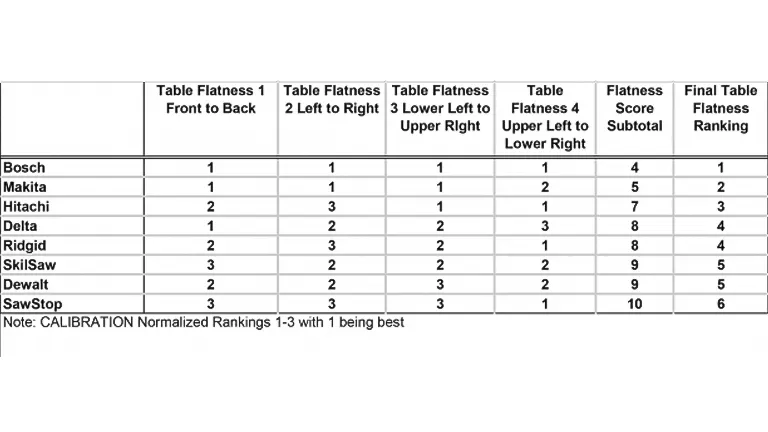
Cutting Depth and Blade Size
The standard blade size for most table saws is 10 inches. Larger saws use 12-inch blades, however, and some compact saws use 8-1/4-inch blades or even smaller. Lewis, expands further, “Ultimately, the blade size you choose will be based on your own cutting depth requirements. If in doubt, a 10-inch blade will give adequate cutting depth for most workshops and jobsite saws. Large industrial table saws often have 12-inch blades.
However, it is unlikely that your average DIYer will require a table saw with this cutting depth.” If you need an especially small saw for crafting purposes like making a shoe rack, then the Worx BladeRunner Portable Tabletop Saw, which uses 4-inch jigsaw blades, is our top recommendation.
Power Saw
The more powerful the table saw, the better it can cut easily and cleanly through even hard or thick wood. Generally, professional saws have anywhere from 2 horsepower all the way up to 8, which is far beyond the needs of the average woodworker. Many less-powerful table saws don’t use horsepower to state the motor power but rather use amps. A 15-amp motor, which is very common on a non-professional benchtop or jobsite table saw, is roughly equivalent to 1 horsepower and is sufficient for most typical DIY purposes, like our best overall, best portable, and best cordless. Our best for beginner pick, the Ridgid 10-Inch Portable Table Saw With Stand, has a 15-amp motor and is a great choice for beginning woodworkers.
Accuracy of 45-Degree Stop Measurement
To gauge the accuracy of the factory-set 45-degree stop, TBB employed the Wixey WR365 digital inclinometer, a device renowned for its 0.1-degree accuracy. The measurement process involved placing the Wixey gauge on the table and calibrating the inclinometer to the table by zeroing out the gauge. Post-calibration, the measurements displayed on the gauge were relative to the saw table.
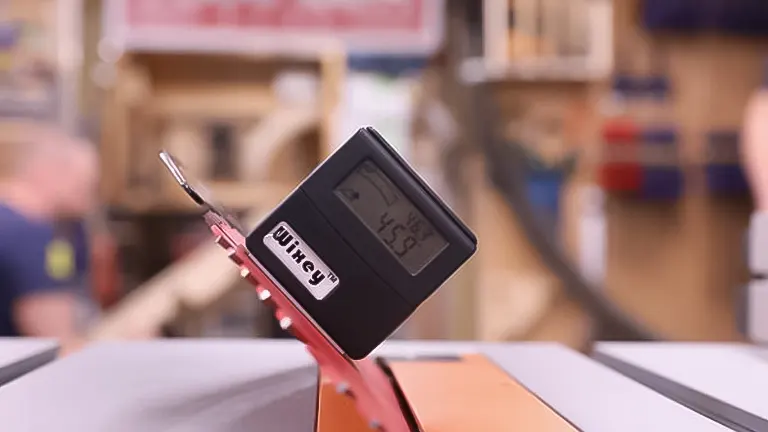
For the assessment, the gauge was attached to the blade, and the saw mechanism was utilized to adjust the blade incline until it reached the point at which the blade or trunnion hit the factory-set 45-degree stop. The measurement at this point was duly recorded. To ensure the precision and consistency of the measurement, TBB conducted the test twice, with results consistently falling within 0.1 degree of the prior test in each instance. This meticulous approach guaranteed the accuracy and reliability of the 45-degree stop measurement.
As you can see below most of the saws were fairly close to 45 degrees right out of the box, but you’ll want to do some calibration if you plan on doing some finish work. SawStop was perfect out of the box and Makita, Hitachi and SkilSaw were very close with only a 0.1 degree deviation. Ridgid was almost a full degree off from the 45 stop.

Essential Components
When selecting a table saw, various fundamental components play a crucial role in determining its functionality. While most of these components come standard with the majority of table saws, some may be considered as additional features.
- Table: The stability of a table saw is heavily dependent on its table. Larger tables accommodate bigger boards but may demand more workshop space. Optimal tables are crafted from cast iron, with steel being a suitable alternative. Cheaper portable table saws may feature aluminum tables, but these tend to transmit more vibration, and none made it to our recommended list.
- Blade: Generally, a 10-inch blade allows for cuts up to a depth of 3-½ inches when positioned at a 90-degree angle to the board.
- Blade Cover: Usually made of transparent plastic, the blade cover arches over the blade, shielding the user from airborne sawdust and debris while providing some hand protection. This safety feature is standard across all table saws.
- Rip Fence: An adjustable guide that ensures the board maintains a perfectly straight path during rip cuts.
- Miter Gauge: An adjustable guide facilitating the positioning and securing of the board when executing miter cuts, typically adjustable between 0 and 90 degrees.
- Bevel Gauge: A tilt adjustment for the saw blade, essential for making bevel cuts.
- Riving Knife and Anti-Kickback Pawls: These safety features work in tandem to minimize the risk of “kickback,” where the board catches and abruptly jerks back towards the user. These components contribute to a safer and more secure working environment.
Safety Measures
In prioritizing user safety, the majority of table saws are equipped with essential safety features that should never be altered or removed. As previously mentioned, the blade cover, riving knife, and anti-kickback pawls are standard components integral to the safety design of table saws.
- Additionally, a common inclusion with table saws is a push stick or push block, crucial tools used for safely guiding the board through the saw’s blade without the need to use fingers in close proximity.
- Considering the inherently dusty nature of woodcutting, dust collection systems become a vital aspect of safety. Most table saws incorporate a designated dust port where users can attach a shop vacuum hose, effectively minimizing airborne dust during cutting operations.
All In All Conclusion
All in all, the Best Portable Jobsite Table Saw 2025 has truly proven its mettle as a reliable and versatile tool for carpenters and woodworkers alike. Its portable design, coupled with robust features such as an adjustable fence system, powerful motor, and the ability to handle a variety of cuts, make it a standout in its category. The user-friendly setup, coupled with thoughtful features like soft-start technology and safety enhancements, enhances the overall user experience. The range of rip capacity and cutting depth accommodates diverse projects, from simple DIY tasks to more intricate woodworking endeavors.
While considerations like the absence of a stand and the need for initial calibration should be noted, the positive attributes far outweigh the minor drawbacks. This table saw is undoubtedly a commendable investment for those seeking a reliable and efficient tool for jobsite and workshop applications.
Frequently Asked Questions
- What makes a table saw portable and suitable for jobsites?
Portable jobsite table saws are characterized by their compact design, lightweight construction, and often come with features like folding stands or handles for easy transportation. These attributes make them ideal for on-the-go usage, catering to the needs of carpenters and woodworkers working in different locations. - Can a portable table saw still deliver sufficient power for various cutting tasks?
Yes, many portable jobsite table saws are equipped with powerful motors that provide ample cutting power. The focus on portability doesn’t compromise their ability to handle a variety of materials, including hardwoods and sheet goods. - What should I consider when choosing a portable jobsite table saw for DIY projects?
Key factors to consider include the saw’s rip capacity, ease of setup and use, power source (corded or cordless), cutting depth and angles, as well as additional features such as a durable stand, precise fence system, and safety features. - Can these saws handle different types of cuts, such as bevels and dado cuts?
Yes, many portable jobsite table saws are versatile and capable of handling various cuts, including bevel cuts at different angles. Some models also support dado cuts with the use of specific blades and throat plate assemblies. - Do all portable table saws come with stands?
No, not all portable table saws come with stands. While some models include a folding stand for added convenience, others may require a separate purchase of a stand. Consider your workspace and preferences when choosing a model. - Are there safety features I should look for in a portable jobsite table saw?
Yes, safety is paramount. Look for saws with features such as blade guards, anti-kickback pawls, and riving knives. Additionally, models with soft-start technology enhance safety by gradually ramping up the blade speed. Always follow proper safety guidelines and use personal protective equipment when operating a table saw.
We’re eager to hear your feedback! Feel free to share your firsthand experiences and thoughts on the Best Portable Jobsite Table Saw 2025 in the comments below. Your insights can be valuable for others looking to make well-informed decisions in their tool selection. Let’s build a community of shared knowledge!

Edward Smith
Forestry AuthorWoodworking is about more than crafting; it's a harmonious connection with nature, mastering tools, and preserving our environment. I'm here to share my knowledge and experiences with you, forging a future where we can embrace wood's beauty and utility while safeguarding our forests' health and diversity.

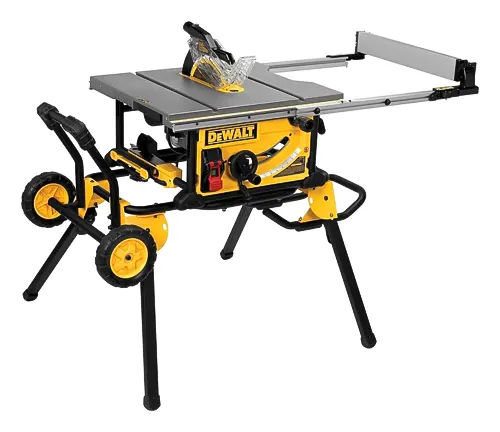
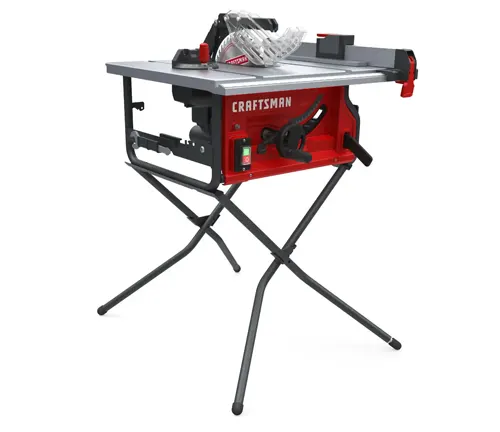

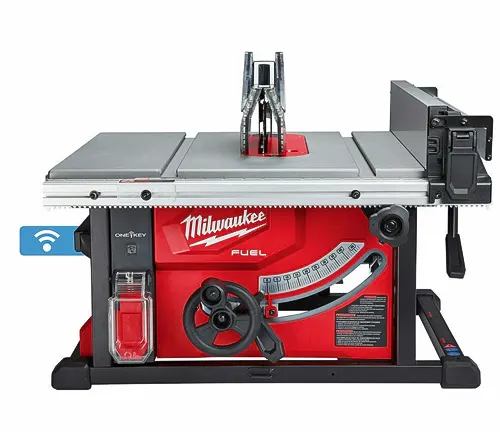
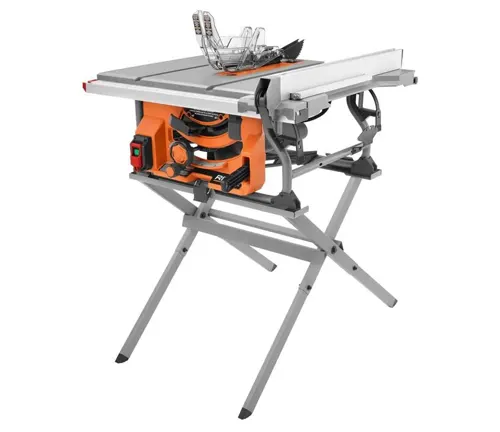
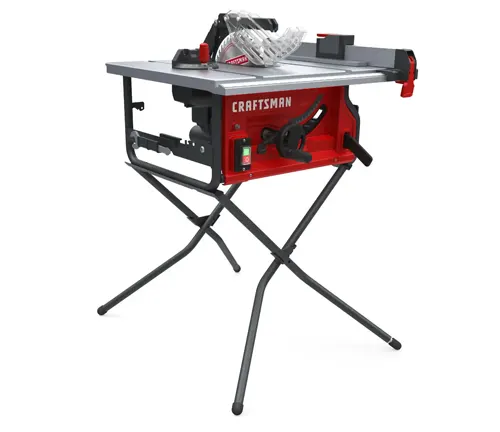
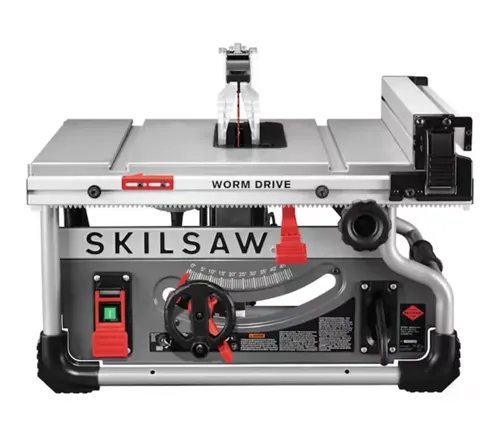
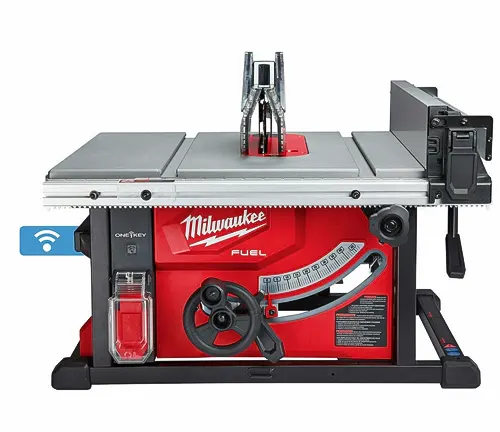
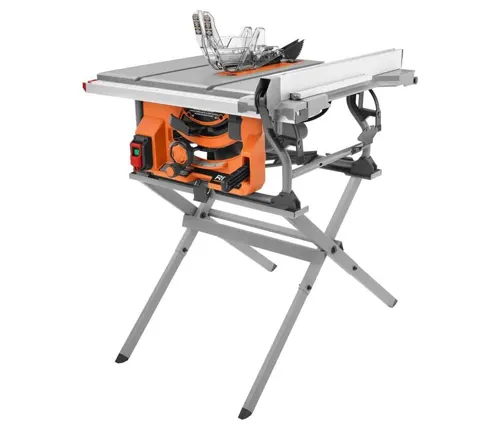












Leave your comment